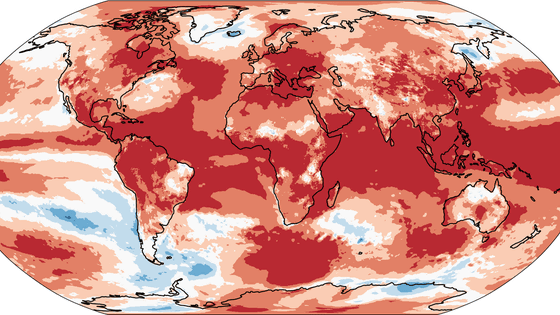Study finds that young people, not older people, are more likely to die from high temperatures

The average global temperature continues to rise year by year, and it has been
Heat disproportionately kills young people: Evidence from wet-bulb temperature in Mexico | Science Advances
https://www.science.org/doi/10.1126/sciadv.adq3367

High heat is preferentially killing the young, not the old, research finds
Jeffrey Schrader of Columbia University and his colleagues looked at data from Mexico, which had collected very detailed data on both mortality and daytime temperatures, from 1998 to 2019. They also noticed that 'both heat and humidity are important for thermoregulation, but there are few studies of mortality that take humidity into account,' so they focused on average wet-bulb and dry-bulb temperatures .
The results showed that while deaths from 'cold' are concentrated among the elderly, deaths from 'heat' such as heat stroke are overwhelmingly more prevalent among young people. Specifically, an average of about 3,300 people die from heat-related causes each year, and of these, nearly 75% are young people under the age of 35.
According to Schrader and his colleagues, there may be several factors at play here, the most obvious being that younger people are more likely to be exposed to heat, as they are far more likely to work outdoors in jobs such as agriculture or construction, or to play sports outdoors.

According to Schrader and colleagues, agricultural workers in Mexico make up 15% of the total workforce, compared with 30% in other middle-income countries and 27% globally. 'Given this, Mexico does not have a large agricultural workforce,' they wrote. 'If exposure to high temperatures for occupational reasons is related to deaths among young people, we need to dig deeper into this issue.'
Schrader and his team are also digging deeper into the relationship between heatstroke mortality and wet bulb temperature. Previous studies have shown that 'wet bulb temperatures of about 27 degrees are more likely to cause death,' but the actual number of deaths was higher at 23 or 24 degrees. For young people, the ideal temperature is about 13 degrees, and within this range, mortality is minimized.

The study estimated that heat-related deaths were 2.6 times more likely to occur in people under 35 than in people over 35. However, cold-related deaths were 56 times more likely to occur in people over 35. 98% of cold-related deaths occurred in people over 35, 28% in people between 50 and 70, and 68% in people over 70.
It is estimated that as of 2024, cold, not heat, will be the leading cause of temperature-related deaths in the world, including Mexico. However, the proportion of deaths due to heat has been increasing since at least 2000, and this trend is expected to continue.
'As the climate gets warmer, we predict that heat-related deaths will increase, and that young people will suffer the most,' said R. Daniel Bressler, one of the researchers in the study, who expressed hope of expanding the study to other countries, such as the United States and Brazil. 'These results are surprising,' said Schrader. 'People under 35 are the most physiologically robust population. We'd like to understand more about them.'
Related Posts:
in Science, Posted by log1p_kr







